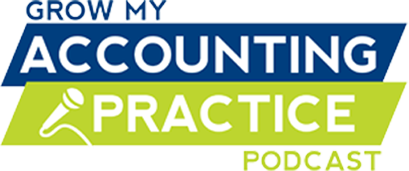The formula for profitability has been established for ages. Every business owner, CEO, freelancer and entrepreneur knows it. It is even supported – scratch that, required – by Generally Accepted Accounting Principles (GAAP), which is enforced by the SEC in the United States and the International Accounting Standards Board internationally.
GAAP’s fundamental formula for profit is simple:
Sales – Expenses = Profit
There is just one problem… The formula hurts profitability. There is a reason that 21 million out of 28 million small businesses in the US are surviving check to check. It’s not that 21 million people are smart enough to start and build a business, yet not smart enough to turn a profit – its that they are relying on a flawed formula. Sales – Expenses = Profit is a lie. The formula doesn’t yield a profit.
Logically, of course, the formula is sound. A business must first sell in order to generate inbound cash flow. Then the business deducts the expenses utilized to deliver its product or service and to run its operations. What remains is profit. Profit, effectively, is a leftover.
While the GAAP formula makes logical sense, it ignores the fact that it is managed by people. We are, first and foremost, emotional beings, prone to ignore (or even defy) logic.
Cyril Northcote Parkinson, in his famous bestseller Parkinson’s Law, proposed that “work expands so as to fill the time available for its completion.” His theory has been generalized to state “The demand upon a resource tends to expand to match the supply of the resource.”
Arguably, money is the ultimate resource. In GAAP’s “Sales – Expenses = Profit” formula, the business owner sees the cumulative deposits (resource) from sales and has a propensity to conclude that all the money is available for expenses (the demand expands to match the supply). The new equipment purchase is justified because the money is there. A new hire starts, because the money is there. Profit? It is an afterthought. Therefore, there rarely is any.
Now consider a new formula, where a business takes profit first:
Sales – Profit = Expenses
Mathematically the formula is identical to GAAP’s. But from from the perspective of human behavior, the Profit First formula is radically different. In the Profit First formula a preset percentage of deposits generated through sales are first allocated to profit. The remainder is used to pay expenses.
In practice, as deposits from sales come in a predetermined percentage, for example 15%, is immediately transferred to a separate profit account. The remainder is available for the business leader to run business as usual. The business owner will see his available cash (which has had the profit already deducted) and make decisions accordingly. The new equipment purchase may be delayed, or a more cost effective alternative may be found. A new hire won’t be made because the money is not there, and perhaps the entrepreneur will conclude was unnecessary in the first place.
While I have co-founded, built and sold two multi-million dollar technology service firms, admittedly they were never truly profitable. Every increase in revenue seemed to be matched with an even greater increase in expenses. Every day I checked (and still do) my bank balances. As the balances would climb and fall, so would my confidence and my spending. I lavishly incurred new, unnecessary expenses when my bank account was fat. I panicked when it was thin.
This behavior, I have found, is not unique to me. In fact, of the hundreds of entrepreneurs and business owners I have asked, the vast majority also do “bank balance accounting.” It was with this realization that I started doing Profit First for myself five years ago. That is when I applied the “pay yourself first” principle to the operations of my businesses. I became my own guinea pig for Profit First.
Every quarter since, I have posted a profit. Every business I have invited to flip the GAAP formula, has also posted a profit or, unfortunately in some cases, decided to give up the system because it put “too much downward pressure on expenses.”
GAAP offers so much more in business insights than most entrepreneurs could imagine, but it does fall short on working with an entrepreneurs “bank balance” habit. I have become an advocate for the Profit First approach to cash management, because of the one thing it does do extremely well. It works with the natural habit of business owners. And, it functions as a “plug-in” to all the GAAP accounting systems and processes I have place. It doesn’t change GAAP, it simply sits on top.
Profit First has transformed my own businesses for the better (if you consider consistent profits, better). Admittedly, Profit First is not the panacea to all cash flow problems, but it surely makes profit a habit.











WOW! I help regular people become entrepreneurs and this is a truth that I will now teach all my students. I teach them to give, save, invest and spend (in that order) in their personal life as well as in their business but calling out “profit first” as a (dare I say) business rule, is something I will now work into my program. Thanks Mike and thanks to Mary Ellen Miller who introduced me to your content.
I appreciate Keno… and am happy you will be guiding other business owners to take their profit first.
Hello Mike,
This is very interesting. Thank you!
I am just starting a new business and I am really glad that I found your site now.
I want to make sure I understand correctly.
In the Sales – Profit = Expenses formula, am I then to chose a percentage of the selling price that I will consider to be the profit (for instance the 15% you mention), and move that to a profit bank account immediately?
As an example, if I sell a product for $100 (cost to me $50), I move $15 over to a profit bank account immediately and have $35 available to cover expenses such as inventory replenishment, marketing, etc.? Or am I to take 15% of the gross profit of $50?
Apologies for the newbie question!
Many thanks.
Hi Myriam -That is an excellent question. The Profit First formula works on allocations after the gross profit. I actually call it a Real Revenue. And what I mean by real revenue is that a company that sells, as in your example $100 of product that cost $50 to make… Is actually a company that generates $50 of real business and manages another $50 of transactions above that business.
Perhaps a better example is a home contractor. She may do one million dollars in business, but if $700,000 of that business is subcontractors and materials… Her business is truly a $300,000 business that is managing $700,000 of transactions above it. Hence I called the $300,000 Real Revenue. The profit allocation, and all the other allocations, come from $300,000.
So in your example that 15% of profit comes from the $50.00… The gross profit. Again, I prefer to call it a real revenue because that is what the company is truly generating, the transaction above it is simply your business shifting money from client to your vendor.
Ok, you lost me on this one. I would consider associated costs the same as expenses. Where do you draw the line on what is cost to perform service vs business expenses? If contractor wages are cost, are employee wages cost or expense?
It is easier to understand COGS(product sales) and margin but when you are selling a service that is 80% labor/skills and 20% product/subscription how are you calculating your “real revenue”?
Mike,
Thank you for all your inputs and great insights. i have been reading your blogs and articles on a regular basis and they are simply terrific 🙂 Also your sense of humor that you use while recording your videos is awesome. Keep it up.
Adding to what Myriam said , i understand this rule of Profit % to be calculated on real revenue ( Total Sales – Production Cost )
How about Service Industry ? How can i apply this rule to my business of education ?
How should i calculate Revenues ? and Profit ??
Amit – for a business in the service industry I consider top line revenue to be the real revenue. While there surely are some costs a good sold, they’re usually insignificant for a service business as compared to a manufacturer or retailer. Therefore in a service business, whatever your top line revenue is, use that. Calculate your profit as a percentage of that top line.
I am just starting my private practice (as a mental health therapist). My service doesn’t cost me anything to produce although there are expenses such as rent, marketing, etc. So I’m gathering that my Real Real Revenue is the cost of my therapy sessions… and then I would figure out how much I can spend on rent, marketing, etc after I take my profit.
My question is, how do I decide what percentage to pay myself?